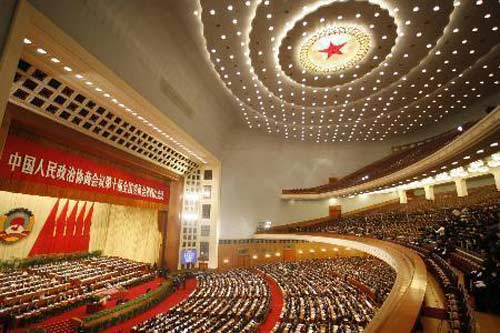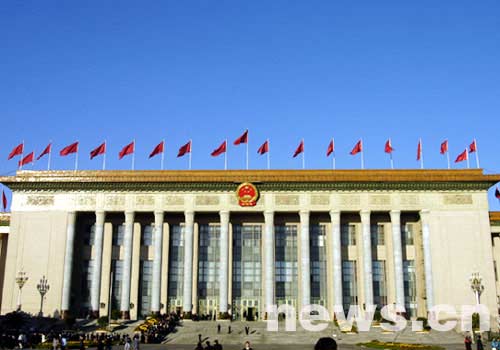On July 15, 1979 the Hall was formally opened to visitors. The ticket price was 0.2 yuan, with an additional charge to have a photo taken in front of the patriotic painting "This land so rich in beauty", which is inscribed with Chairman Mao's calligraphy.
He Husheng recalls that during the 1980s he often went to watch films and performances at the Hall.
Taking the commercial road

From the late 1980s onwards, first state owned enterprises, then foreign businesses and finally Chinese private businesses began to pay for the privilege of holding activities at the Great Hall of the People.
Li Zhiqi has acted as an agent for hundreds of enterprises and government institutions seeking to hold activities at the Great Hall of the People. Li joined the People's Daily from university but left after just two years to set up a public relations company. That now handles a third of the Hall's agency business.
Li said that at first people treated the Hall with great reverence. "It wasn't like holding meeting in a hotel. People would combine meetings with a tour of the Hall. Firms saw the Hall as adding prestige to their meetings. Nowadays, more and more private businesses are holding meetings there."

Not every company gets to hold an activity in the Hall. "Businesses have to get a recommendation letter from a ministry, and present their business licenses and guest lists", said Li.
But the formalities plus the fact that a half day rental will set you back tens of thousands of yuan are no deterrent to the companies queuing up to hold an event there.
Internal reform
Reforms were initially slow. In 1984 when the Hall first began to serve food to the public, it only served fixed price meals. But having been told to pay its own way, the Management Bureau of the hall drew up a reform plan to achieve self-financing within 5 years.
It did not take long for them to realize they were sitting on a priceless asset. Visits, conferences, restaurants and entertainments turned out to be money spinners. By 1986 the Great Hall of the People was covering its costs and by 1990, annual income had reached 20 million yuan.
(China.org.cn by Zhang Ming'ai, November 20, 2008)